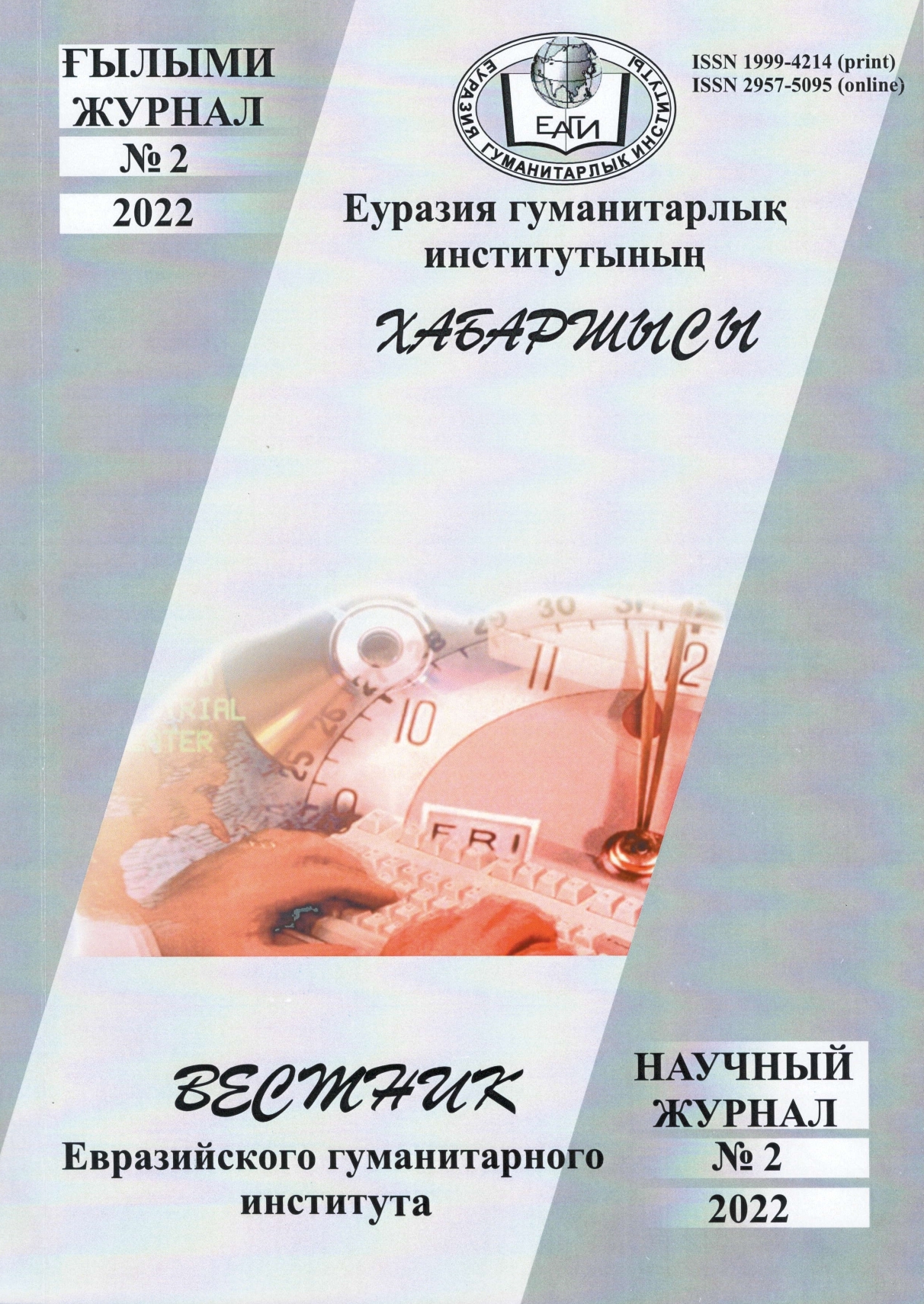ҚАЗІРГІ ҚАЗАҚ ТІЛІНДЕГІ "КӨК" СӨЗІНІҢ СӨЗЖАСАМДЫҚ ӘЛЕУЕТІ
Кілт сөздер:
көк, сөзжасамдық ұя, құрылым, әлеует, сөзжасамның аналитикалық және синтетикалық, лексика-семантикалық тәсілдері.Аңдатпа
Аңдатпа. Қазақ тілінде «көк» сөзі омоним сөздердің қатарында қарастырылады. Тілімізде бұл сөз заттық, сындық, сапалық мағыналарда қолданылатын көптеген сөздердің жасалуына негіз болған. Мақалада қазіргі қазақ тіліндегі «көк» сөзінің сөзжасамдық әлеуеті сол сөзден өрбіген сөзжасамдық ұяға талдау жасау негізінде анықталады. Тілдік деректер, яғни туынды сөздер ғалым Б.Қасымның «Күрделі зат есімдер сөздігінен» және «Қазақ әдеби тілінің сөздігінен», М.Бұралқыұлының “Қазақ тілінің түсіндірме сөздігінен” жиналған. Қазақ тіл білімінде сөзжасамдық ұя мәселесін зерттеген Н.Оралбай, О.Тоққожаева, Т.Тоқтарова, Н.Қоқышева, Б.Есімсейтов, К.Құрманәлиев, Д.Қуандықова сияқты ғалымдардың еңбектері, көк сөзін зерттеген И.А.Батманов, А.Н.Кононовтың, Ғ.А.Айдаров, Ә.Қайдаров, З.Ахтамбердиева, Б.Өмірбеков, Г.Ж.Баялиева, Н.Н.Аитова, С.Ә.Рахымберлина, Б.Қ.Қасымның еңбектері қарастырылады. Сонымен қатар «көк» сөзінің бес семантикалық өрісінен бес сөзжасамдық ұяда жалпы 271 туынды сөз жасалғаны, сөзжасамдық ұядағы сөзжасамның синтетикалық, аналитикалық, лексика-семантикалық тәсілдері арқылы жасалған туынды сөздердің саны анықталады. Көк сөзі бес түрлі мағынада қолданылатын омоним болғандықтан, одан өрбіген туынды сөз бес сөзжасамдық ұя құрады. Бірінші сөзжасамдық ұяға түр-түске қатысты көк (сын.) мағынасындағы сөз, екінші сөзжасамдық ұяға жасыл шөп мағынасындағы көк сөзі, үшінші сөзжасамдық ұяға аспан мағынасындағы көк сөзі, төртінші сөзжасамдық ұяға түйенің көнінен тілінген жалпақ таспа мағынасындағы көк сөзі, бесінші сөзжасамдық ұяға піспеген, шикі мағынасындағы көк сөзі негіз болады.


